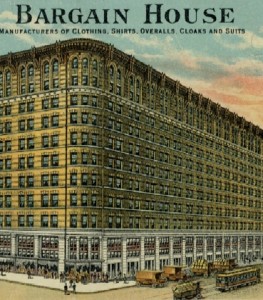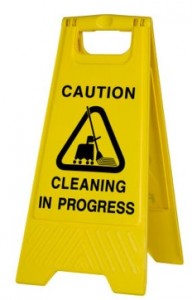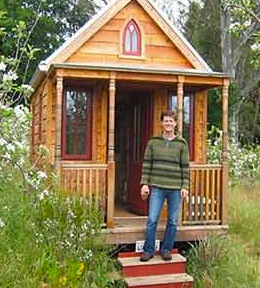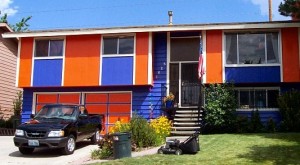Six Secrets for Buying an REO
 Are you interested in buying a foreclosure house owned by the bank?
Are you interested in buying a foreclosure house owned by the bank?
Lots of investors know they can find a great deal by buying an REO (Real Estate Owned) house. REOs are the properties the bank didn’t discount enough to attract investors at the foreclosure sale, or which were taken without a foreclosure sale.
And while you might not get the same steal that you would at an auction, REOs have LOTS of advantages over buying at the foreclosure sale (most relating to reduced risk).
To find a great REO deal, you need to be savvy, and you need to understand exactly what the bank is looking for before you start submitting offers.
Here are the Six Secrets you need to know before making your offer on an REO.
1. Don’t lowball recent listings
Banks know newly listed properties haven’t been seen by enough potential buyers… so they will wait  to see what offers come in over time. The asset manager handling negotiations for the bank has already priced the property based on what they think the property is worth. And each bank has its set of guidelines on how much of a price reduction they can stand at each stage of the process. So don’t expect a response if you are not close to the asking price on brand new listings.
to see what offers come in over time. The asset manager handling negotiations for the bank has already priced the property based on what they think the property is worth. And each bank has its set of guidelines on how much of a price reduction they can stand at each stage of the process. So don’t expect a response if you are not close to the asking price on brand new listings.
If you want to low-ball (anything more than 10% off asking price), search for listings that have been on the market for 90 days or more. The asset manager has already had enough time to realize the property is not pulling in the expected offers… so the property must be overpriced. And the bank discount guidelines will be more in your favor the longer they have owned the house.
2. Avoid “highest and best”
If you see a fantastic property at a way-too-good-to-be-true price, you can be sure the agent listed the house low to grab lots of attention and create multiple offers. And you can be sure the agent will be  sending an email saying “this is a multiple offer scenario and we need your highest and best offer by noon”. That’s Agent-Speak for “please bid against yourself and send an offer higher than your last offer… even if you might already be the highest offer”.
sending an email saying “this is a multiple offer scenario and we need your highest and best offer by noon”. That’s Agent-Speak for “please bid against yourself and send an offer higher than your last offer… even if you might already be the highest offer”.
This selling tactic gets people emotionally invested and generates bidding wars… often resulting in a price way higher than the listing price… and often even higher than the asking price of other comparable listed properties.
Don’t fall for it. The key is to know what the property is worth and what you can afford. The house still may be worth more than the list price…and may be a good deal over the list price… just don’t overbid. Trust your numbers.
3. Jump on a Bargain.
Do your research, know your market, drive your neighborhoods… and be ready to pounce the moment a house goes on the market. You can be sure other investors will make offers within the first few days (if not hours) of a good deal hitting the market. But if your offer gets there first, you might have a slight edge. You might have your offer accepted while others are still trying to make up their mind. Don’t be the one trying to make up your mind.
4. Have Cash
Cash is king. Transactions funded with cash close quicker and more reliably, so banks prefer the cash offer over the financed offer. Loans take time and lenders require surveys, appraisals, inspections and title insurance… which cash investors can short circuit. So banks will discount deeper for a cash offer. If you don’t have cash savings to buy an REO, find it. Relatives or friends are your best source. Retirement accounts, credit cards, equity line… whatever. But if you don’t have cash, it is much harder to lock up a steal.
5. Submit Clean Offers
When we submit REO offers, we ask to close in 10 days, all cash, no contingencies, no contributions,  no loans, no excuses.
no loans, no excuses.
The asset manager knows exactly what they will net, and that nothing stands in the way of closing, once they sign the contract accepting our offer.
Clean offers are critical if you get caught in a “highest and best” situation, because you will beat out the financed, messy offer every time.
6. Submit EVERYTHING up front
Every bank is going to want a written offer, proof of funds (for a cash offer) or loan approval (for a financed offer), and proof of the earnest money deposit.
Some banks need your agent to submit the offer through a proprietary online service. Others will need certain forms filled out.
But EVERY bank has a comprehensive addendum… which is one long form that basically says “we don’t have to sell if we don’t want to… and you can’t do anything about it…. and oh by the way, we really know absolutely nothing about this house.” You might as well sign this as early in the process as possible.
Make sure your real estate agent submits ALL the documents up front. If YOU were the asset manager and you had to choose between an offer with all the documentation neatly attached or one without, which choice would you make?
Buying an REO is a great way to pick up an investment property or a new home. Follow these Six Secrets, and you are well on your way to picking up your deal of the year.






